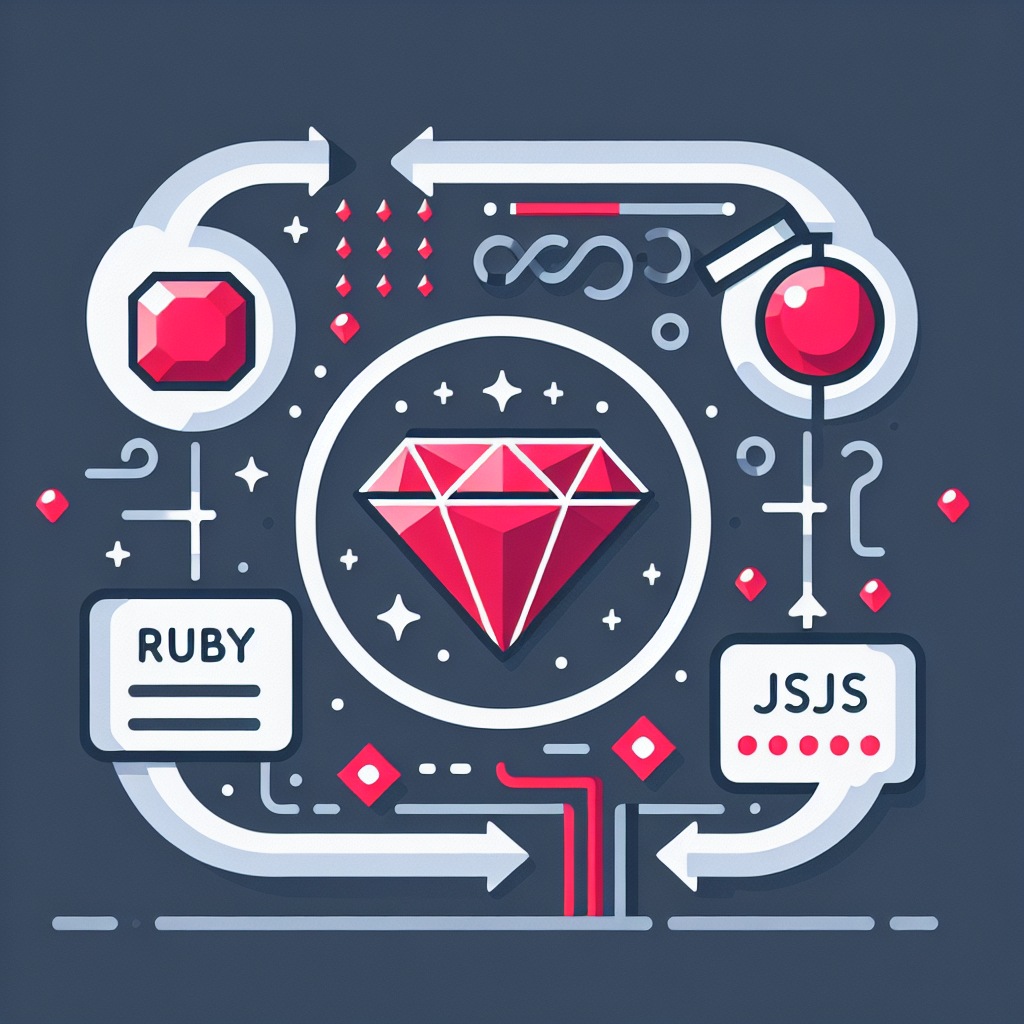Convert Ruby to JavaScript: Fast & Easy Tool Online
Effortlessly convert Ruby code to JavaScript with our powerful tool. Enhance your coding workflow and bridge the gap between languages seamlessly!
Source Code
Converted Code
Output will appear here...
Effortlessly convert Ruby code to JavaScript with our powerful Ruby to JavaScript tool. Ideal for developers looking to streamline their web development process, this tool ensures seamless code translation, enhancing productivity and reducing errors. Perfect for cross-platform projects, it supports a smooth transition between languages, making it an essential asset for modern programming.

Ruby to JavaScript Conversion Tool Link to this section #
Effortlessly transform Ruby code into JavaScript with our advanced conversion tool. Designed for developers seeking seamless integration between Ruby and JavaScript, this tool is perfect for those transitioning between these two popular programming languages.
Key Features: Link to this section #
- Automated Conversion: Instantly convert Ruby syntax to JavaScript, minimizing manual coding efforts.
- Syntax Highlighting: View and compare both Ruby and JavaScript code with syntax highlighting for better readability.
- Error Detection: Identify potential conversion errors and receive suggestions for corrections.
Why Use This Tool? Link to this section #
- Save Time: Avoid the painstaking task of rewriting code manually.
- Improve Accuracy: Ensure precise conversion with minimal room for error.
- Enhance Learning: Understand the differences and similarities between Ruby and JavaScript through practical examples.
Example Code Snippets Link to this section #
Convert Ruby code to JavaScript effortlessly. For instance:
Ruby Code:
def greet(name)
"Hello, #{name}!"
end
puts greet("World")
JavaScript Equivalent:
function greet(name) {
return `Hello, ${name}!`;
}
console.log(greet("World"));
Best Practices: Link to this section #
- Review Logic: Post conversion, review the logical flow as Ruby and JavaScript handle certain operations differently.
- Test Thoroughly: Ensure the converted JavaScript code functions as expected by conducting comprehensive testing.
- Stay Updated: Keep abreast of updates in both languages to ensure compatibility and leverage new features.
Additional Resources: Link to this section #
By utilizing our Ruby to JavaScript conversion tool, developers can efficiently bridge the gap between these dynamic languages, fostering a more versatile coding environment.
Frequently Asked Questions
What are the main differences between Ruby and JavaScript?
Ruby is a dynamic, object-oriented programming language known for its simplicity and productivity, often used for web development with frameworks like Ruby on Rails. JavaScript, on the other hand, is primarily used for adding interactive elements to web pages and is essential for front-end development. While Ruby is server-side, JavaScript can be both client-side and server-side (with Node.js).
Can I use Ruby and JavaScript together in a web application?
Yes, Ruby and JavaScript can be used together in a web application. Ruby, often with the Ruby on Rails framework, can handle server-side logic, while JavaScript can manage client-side interactions and dynamic content. This combination allows developers to build robust, full-stack web applications.
How can I convert Ruby code to JavaScript?
Converting Ruby code to JavaScript manually involves rewriting the logic and syntax to fit JavaScript's paradigms. However, there are tools like Opal that can transpile Ruby code into JavaScript. It's important to understand the differences in language features and idioms to effectively translate code between the two languages.